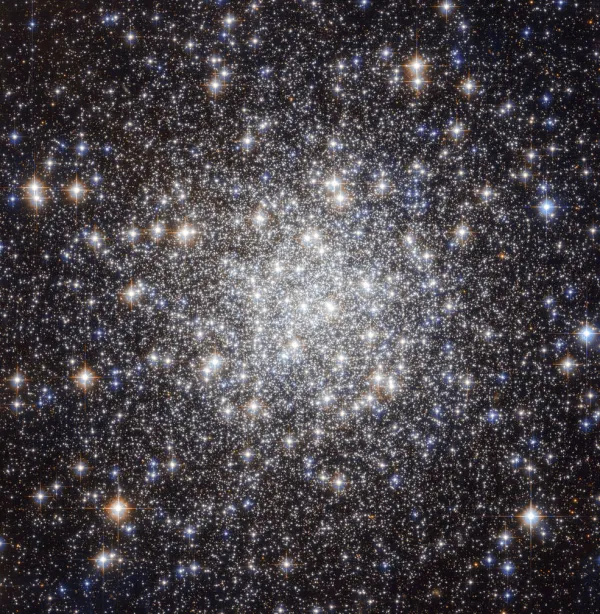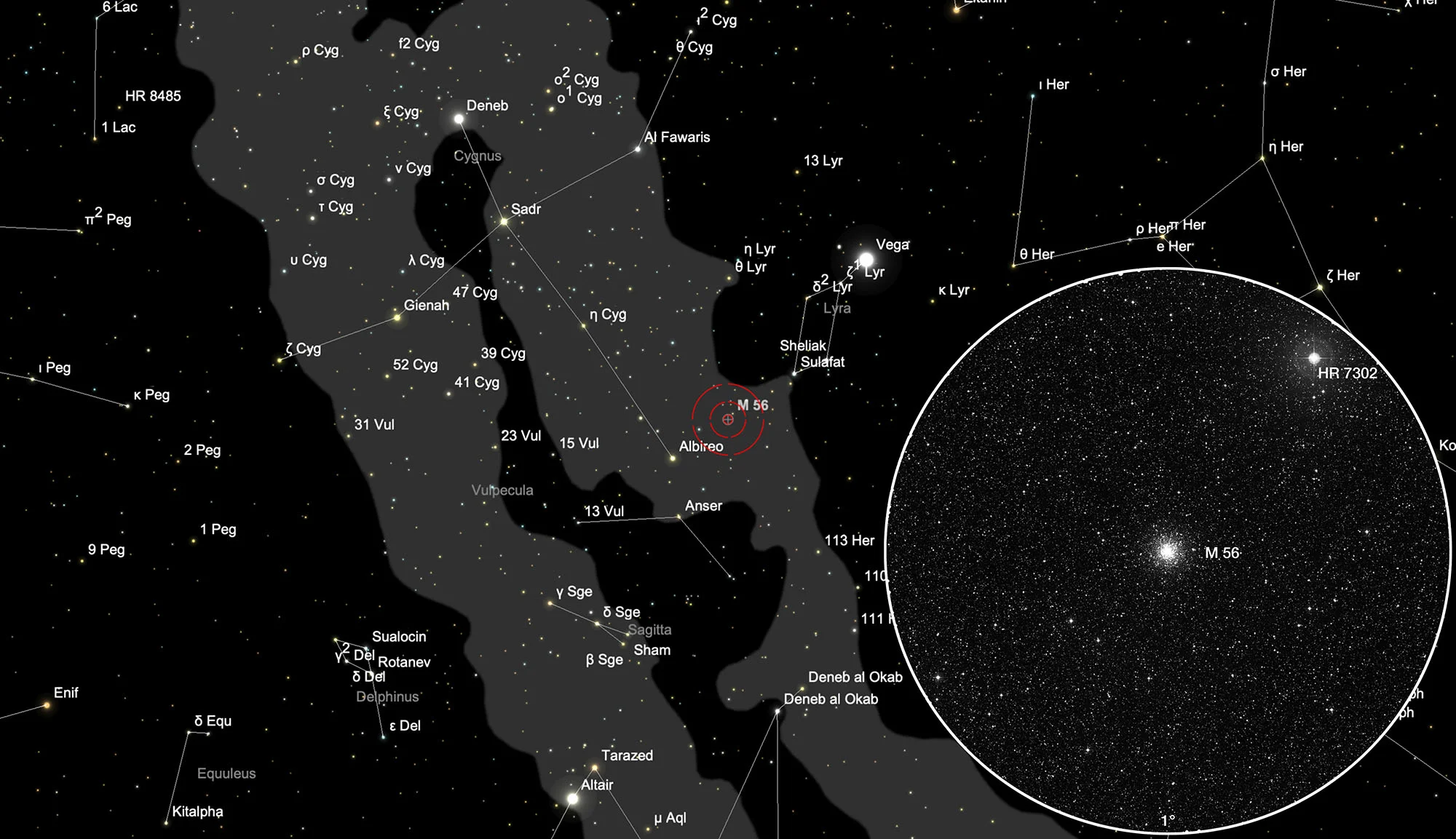Globular Cluster Messier 56

History
Charles Messier discovered this globular cluster on 19 January 1779 - the same night he discovered one of its comets. With his small 3.5 feet long lens telescope he was unable to resolve the globular cluster into individual stars and only saw a round, diffuse spot that looked like a comet without a tail. Four nights later on February 23, he pointed his telescope again at the same spot and noticed that, unlike his comet, this round spot did not move. So he included it as the 56th object in his catalog and wrote: «Nebula without stars and has little light». William Herschel was able to break it down into single stars from 11th to 14th magnitude in 1784 with his large reflector telescope. [4]
Physical Properties

M 56 is about 30'000 to 35'000 light years away and has a total of about 230'000 solar masses. The age of the stars in this globular cluster is estimated to be about 13 billion years, about three times older than the sun. Studies of the spectral lines reveal the chemical composition of the stars. These have relatively few elements heavier than hydrogen and helium. A typical sign of the old age of the stars, which formed early in the universe when there were still few heavy elements. It has been found that globular clusters with the same chemical composition lie on a plane in the halo of the Milky Way, which suggests that they were originally captured by a nearby dwarf galaxy and not from our Milky Way. [145, 251, 280]
| Designation | NGC 6779 |
| Type | GCL (X) |
| Right Ascension (J2000.0) | 19h 16m 35.5s |
| Declination (J2000.0) | +30° 11' 07" |
| Diameter | 8.8 arcmin |
| Visual magnitude | 8.4 mag |
| Metric Distance | 9.400 kpc |
| Dreyer Description | globular, B, L, iR, gvmCM, rrr, st 11…14 |
| Identification, Remarks | h 2036; GC 4485; M 56; GCL 110 |
Finder Chart
The globular cluster M 56 is located in the constellation Lyra about halfway between the stars Albireo (β Cygni) and Sulafat (γ Lyrae). The star HD 7302 is 5.8 mag bright and still visible to the eye on a clear, dark night. M 56 is just under half a degree away. The best observation time is March to December.
